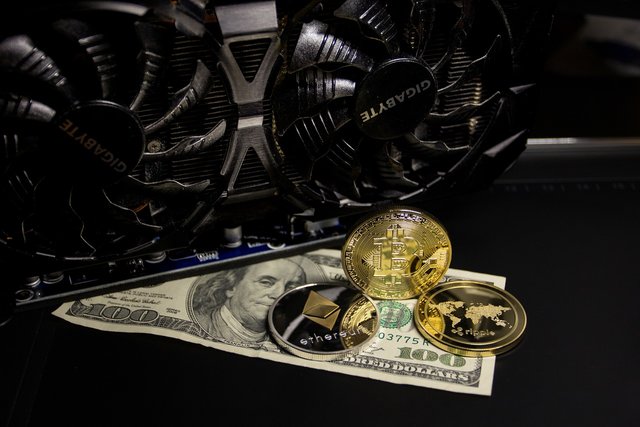Ethereum's Forgotten Treasure: DAOs | CryptoSlate


Satoshi Nakamoto’s 2008 whitepaper explained Bitcoin as the most significant document in blockchain to date, then in 2013, Vitalik Buterin’s white paper delineated the Ethereum (ETH) protocol a strong contender for second.
Ethereum has since become one of the world’s most critical blockchains, serving as a base for thousands of ICOs and continuously evolving to meet network needs.
Ethereum’s reputation stems from its ability to run smart contracts, allowing developers to run decentralized applications (dApps). Smart contracts enable developers to construct Decentralized Autonomous Organizations (DAOs) – an Ethereum blockchain application.
What is a DAO?
Investopedia paraphrases the DAOs concept:
“The organizational theorist Arthur Stinchcombe once wrote that contracts are merely organizations in miniature, and by extension all organizations are just complexes of contracts. Firms are created using a series of contractual agreements, ranging from employment contracts and employee benefits, to deals with vendors and suppliers and obligations to its customers, to building leases and sales & purchases of equipment.”
DAOs, the formal and informal arrangements keeping organizations afloat are replaced by smart contracts.
Smart contracts, by virtue of running on the blockchain network in conjunction with blockchain transactions, are automatic and reliable. Smart contracts could create an organization where contributors automatically receive payment via smart contracts as soon as blockchain ledgers register their work product’s receipt.
Relationships governed by smart contracts don’t require third-party oversight and participants are rewarded equitably for their work.
As a result, hierarchical decision-making powers traditionally held by CEOs or hiring managers may be redistributed among all members of a DAO. Smart contracts incentivize participation in these management and governance duties since the contract won’t be triggered without participation.
Lessons of the Original DAO
A DAO has been previously implemented on the Ethereum network. The Original DAO was a venture capital fund meant to support new blockchain enterprises but had no office space or investment team. Instead, investment decisions were to be made collectively among token holders.
However, flaws in its code and design let a still unidentified thief get away with Ether worth $55 million. The theft was so devastating that Ethereum developers had to initiate a controversial hard fork.
The Original DAO frightened many away with its concept, but eventually, it was apparent the Original DAO’s failure was specific to the Original DAO, not to the concept itself.
However, DAOs suffered from coding and security errors before and after it went live. Once the Original DAO was active, developers had no way to fix their code and patch security issues and stored all their funds in one wired wallet.
These were fatal but instructive flaws and DAO developers understand that DAOs require a more secure design and meticulous code audits. In a Bloomberg story, Christopher Jentzsch, a founder of the Original DAO, explained the security flaw:
“Another decision [Jentzsch] made when he had no idea of the bug shows how quirky and unforgiving code can be. ‘If the capital ‘T’ in line 666 had been a small ‘t,’ that would also have prevented the hack,’ he says.”
The Future of DAOs
The blockchain world’s first experience with DAOs was rough but is now making a comeback as developers learn from the Original DAO and work on more sophisticated and secure structures.

The impending launch of DAOstack, a tool suite for building DAOs using modular governance modules, is a step towards DAO adoption.
Developers and builders can use DAOstack to build DAOs with the option to only use governance modules vetted by the DAOstack community for functionality and security. DAOstack founder Matan Field explains the company’s vision in the video below:
Cover Photo by Mohammad Alizade on Unsplash
Commitment to Transparency: The author of this article is invested and/or has an interest in one or more assets discussed in this post. CryptoSlate does not endorse any project or asset that may be mentioned or linked to in this article. Please take that into consideration when evaluating the content within this article.
Disclaimer: Our writers' opinions are solely their own and do not reflect the opinion of CryptoSlate. None of the information you read on CryptoSlate should be taken as investment advice, nor does CryptoSlate endorse any project that may be mentioned or linked to in this article. Buying and trading cryptocurrencies should be considered a high-risk activity. Please do your own due diligence before taking any action related to content within this article. Finally, CryptoSlate takes no responsibility should you lose money trading cryptocurrencies.
Did you like this article? Join us.
Get blockchain news and crypto insights.
Follow @crypto_slate Join Us on Telegram
Author
Joe Kildune
Joe is a freelance writer focusing in a decentralized world while living abroad. His passion for cryptocurrency began with the necessity of a bank account in foreign countries. When he’s not researching blockchain, private coins, and new white papers, he’s looking for new lands with crypto-potencial.
View author profileFollow the latest projects added to the ICO Database
We're tracking 1084 projects from all around the globe.
Get the Top 5 Cryptocurrency and Blockchain Stories Delivered Weekly
The easiest way to stay current with the most important blockchain news and crypto insights.
Posted from my blog with SteemPress : https://coinmarketnewstoday.com/2018/06/ethereums-forgotten-treasure-daos-cryptoslate/


This user is on the @buildawhale blacklist for one or more of the following reasons: